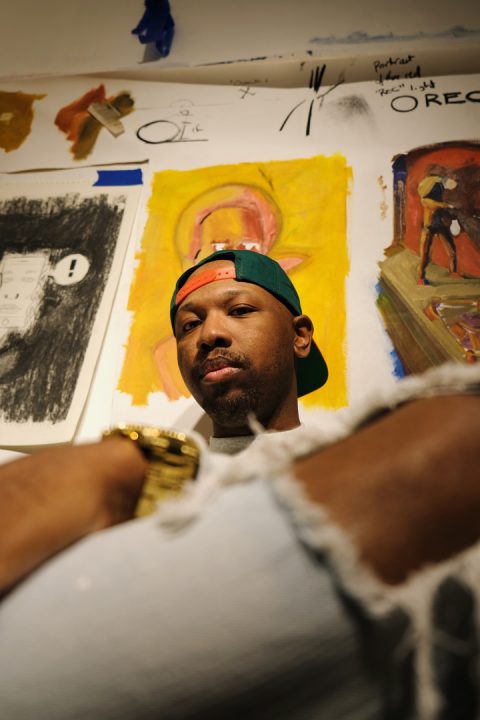The views expressed in our content reflect individual perspectives and do not represent the authoritative views of the Baha'i Faith.
If you’ve ever grieved over a major loss in life, you know how profoundly painful it can be – so is there a way to creatively transform that pain into something else, something better?
Grief and loss can trigger many emotions and physical responses, some we can anticipate, some of which we cannot.
But despite how terrible we may feel in our grief and loss, this passage from Abdu’l-Baha humbly reminds us of the deep purpose and power of grief in our own personal development: “Grief and sorrow do not come to us by chance, they are sent to us by the Divine Mercy for our own perfecting.”
RELATED: The Power of Art to Transform Souls and Society
Emotions of grief and loss can be triggered through the death of a loved one, but also by the loss of a relationship or a job, or a decline in health, or even from tragedies that happen to others. Oftentimes, when we experience such traumatic events, we feel unlike ourselves, clouded, heavy-hearted and out of sorts with the world. Other issues such as depression, physical illness, and confusion begin to come to the surface. As a result we feel out of control and develop the inability to articulate in words how we feel and how we process our loss or trauma.
No one avoids suffering in this life – but, in the following words of Abdu’l-Baha, without suffering, we cannot progress:
Men who suffer not, attain no perfection. The plant most pruned by the gardeners is that one which, when the summer comes, will have the most beautiful blossoms and the most abundant fruit. The labourer cuts up the earth with his plough, and from that earth comes the rich and plentiful harvest. The more a man is chastened, the greater is the harvest of spiritual virtues shown forth by him.
So the next time you find yourself grieving, make art. The arts offer us all a wonderful opportunity to process grief, express our inner thoughts, and channel unspeakable and difficult-to-verbalize feelings.
RELATED: How Can Art Promote Social Justice?
Participating in a creative activity encourages us to use our imaginations, and detach ourselves from the pain we feel in moments of sadness. Unlike bottling up our feelings inside, the arts invite us to nurture our emotions in creative ways in a safe space. By being creative in times of loss and grief, we give ourselves license to express our imaginative powers and become open to divine inspiration. When we open our hearts to grieving through art and creation, we open ourselves to a conversation, one of meditation and spiritual communion:
A conversation can be held, but not as our conversation. There is no doubt that the forces of the higher worlds interplay with the forces of this plane. The heart of man is open to inspiration; this is spiritual communication. As in a dream one talks with a friend while the mouth is silent, so is it in the conversation of the spirit. – Abdu’l-Baha, Paris Talks
Engaging in any creative process gives us a break from cogitating, talking and doing, to simply being in the moment. By taking part in an artistic practice, it can act as the thread between our heads, hearts and hands. Reflecting on the outcome of our creative process often enables us to tell our story and process our emotions outside the moments of loss and grief.

Creating beauty out of pain can be incredibly cathartic, and also reinforces our resiliency as humans. For many artists, experiences of grief, sorrow, and adversity often lead to some of their greatest works. This is not to say that all artists should attempt to lead miserable lives, or continuously torture themselves, but that adversity could also present future opportunities and a depth in their work that otherwise could not be achieved:
O sincere servant of the True One! I hear thou art grieved and distressed at the happenings of the world and the vicissitudes of fortune. Wherefore this fear and sorrow? The true lovers of [Baha’u’llah], and they that have quaffed the Cup of the Covenant fear no calamity, nor feel depressed in the hour of trial. They regard the fire of adversity as their garden of delight, and the depth of the sea the expanse of heaven. – Abdu’l-Baha, Selections from the Writings of Abdu’l-Baha
Research has shown that the grieving process has various stages. Denial, pain, anger, and depression can transition into an upward turn, reconstruction and acceptance. An artistic practice allows us to experience these extreme emotions in a safe way, and enables us to feel empowered to accept and then process the grief and pain, mobilizing us on the path toward healing. Like any language, art provides the key that enables us to speak the true feelings of the heart:
… the function of language is to portray the mysteries and secrets of human hearts. The heart is like a box, and language is the key. Only by using the key can we open the box and observe the gems it contains. – Abdu’l-Baha, The Promulgation of Universal Peace
By transforming our grief and sorrow into art, we can also pray to the Creator, detaching ourselves from the difficulties of this earthly life and asking for his protection and guidance. After all, Baha’u’llah has blessed those who engage in the arts and handicrafts, considering artistic endeavor as a form of worship – so why not use our pain as a way to grow closer to God, by engaging in creativity?
Blessed is he who in the days of God will engage in handicrafts. This is a bounty from God, for in this Most Great Dispensation it is acceptable in the sight of God for man to occupy himself in a trade which relieveth him of depending upon charity. The craft of every craftsman is regarded as worship. – Baha’u’llah, from a tablet translated from Persian.
Dear readers: I’d love to hear from you and learn about the creative ways you’ve channelled your sadness and grief. Please share in the comments below!
















Comments
Sign in or create an account
Continue with Googleor